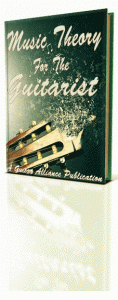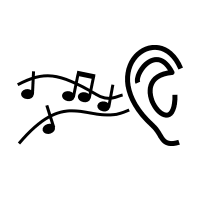Many of us spend years practicing guitar. We learn how to play all sorts of things like scale, chords, arpeggios, and whatnot. Ultimately the goal is always the same: we want to play songs!
When you break it down you’ll find that there are 4 different ways to learn new songs. They are as follows…
1. Tab

Learning how to to read tablature is the quickest way to recreate the riffs and licks just like you hear in the recorded versions. For a more total experience one can study the music notation as well, but many people lack enough training in music theory, so tablature provides a great alternative. Besides there are guitar specific techniques that are better represented in tab.
Get your hands on complete transcriptions to many popular songs by clicking here.
Pros:
- Easy to learn to read tab
- You can learn songs note-for-note- just as they were originally performed
- Great for beginners to learn new guitar techniques
- Can provide you with an in-depth study of a song which allows you to get into the mind of your guitar idols
Cons:
- May be overkill for players who want to do their own thing with the songs and not perform note-for-note renditions’
- Usually lacks rhythm notation
- One song can be several pages long, so it’s not practical to use as a ‘cheet sheet’ for performances
2. Chord/Lyric Sheets

Lead sheets with just the chords and lyrics to a song are very popular. What’s great about these versions is that you don’t have to learn tab, read music, or have a full band backing to sound good. These versions are perfect for just strumming and singing along. These “bare bones” versions of the songs will not provide you with all the detailed information you’ll find about a song that’s found in notation, but do provide an outline of a song, often times one just one page, that a performing guitarist can use as a basis for ‘doing your own thing’.
If this sound like the method for you, how would you like to download a library of over 660 songs with chords and lyrics? Here’s a great e-book that has 660 Strumming Songs.
Pros:
- Easy to play along with
- Usually only 1 or 2 pages along, so perfect for using as ‘cheat sheet’ during performances
- Allows you freedom to do songs your own way
Cons:
- You’ve got to be familar with chords
- Doesn’t provide very much information except for the bare bones of a song
- You’ve got to be familiar with the song
3. Traditional Music Notation

One thing many guitar player neglect is learning how to read music and understanding the theory behind music. How can this be?! It’s like learning how to talk without learning how to read or write. It’s no wonder, really. Learning how to read music takes a lot of study time. People spend years in college learning theory. Do you really need to know all of it anyway? Sure, there’s been a ton of artists who didn’t know how to read music or know any of the theory, but what worked for them may not work for you.
If you would like to increase your ability and knowledge of the guitar then Click here to learn about the “Music Theory For The Guitarist” e-book.
Pros:
- Universal notation for hundreds of years – from Bach to Zappa
- Paints a complete picture of a song with all it’s nuances
- Provides clear pitch, rhythm, and even timbre notation
- Awesome method for learning new songs in combination with tab
Cons:
- Complex and involved – can take years to master
- Guitar specific techniques may not be represented
4. By Ear
This is, by far, the hardest way to learn songs, but some people swear by it. It takes more time, skill, and involvement to learn songs by ear. Many also resort to specialized software that slows songs down, but leave the pitch the same. This allows transcribers to dig in deep and capture the nuances of a performance.
Some people believe that they can’t learn songs by ear because they are tone deaf. Tone deafness is the inability to distinguish between notes. This may NOT the case.
Don’t get me wrong. Tone deafness is a REAL medical condition, but the ability to hear differences in pitch is present in MOST people. This means that you, more likely than not, have the ability to hear, and identify, pitch changes produced on an instrument, such as your guitar.
Pros:
- Fun and rewarding way to learn new songs
Cons:
- Can be tedious and time consuming
- May require specialized hardware or software for breaking up parts and slowing them down